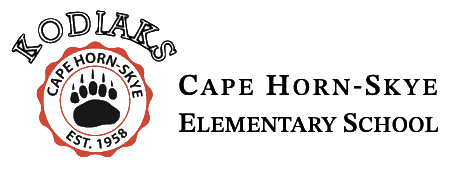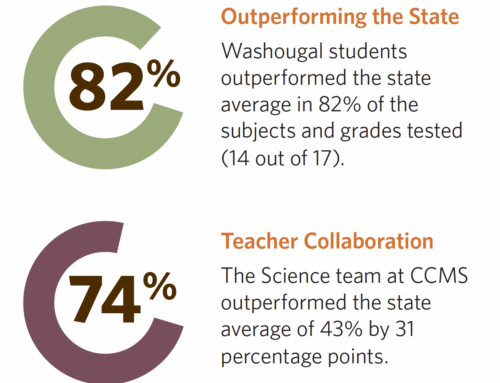Many Cape Horn-Skye students are actually looking forward to science homework during the current school closure, thanks to Kodiak Crates! These fun and challenging learning kits are created by first grade teacher and district science liaison, Darcy Hickey, and are delivered via school bus to students’ homes every other week.
The kits are built around STEM (science, technology, engineering, and math) projects and are all hands-on. In addition, Hickey has created a web page that hosts instructional videos she created and provides a place for families to upload pictures of finished projects.
“We expected maybe 30 families to sign up,” said Penny Andrews CH-S principal. “We currently have 180 families subscribed to get kits. That’s more than 300 students involved.” The first delivery was on April 21, and students quickly began uploading and sending pictures of their work. Designed with CH-S K-5 students in mind, extra materials can be added to a kit based on family count, giving preschool and middle school students a chance to participate as a family. The second kit will arrive May 5.
Hickey has made the process of creating these crates a family affair of her own. “My 12-year-old niece, Madeleine, was my ‘model’ for the videos, but she also helped me with editing and formatting,” Hickey explained. “I definitely couldn’t have done these videos without her!” Hickey’s son has helped fill boxes and cut pieces for the kits and her parents have helped as well in the assembly line in her garage.
Former Washougal teacher, Marlin Martin, has also been a huge help to Hickey. “When I first had this idea, Marlin was the first person I called to see, first of all, what he thought of the idea, and second, if he wanted to help,” she said. “He was thrilled to be a part of this and has helped in every step of the process, from planning, to preparing materials, to giving me feedback and encouragement. He is simply amazing!”
Hickey said every CH-S staff member has participated in the success of Kodiak Crates as well. “They work hard all year, instilling a love of science in our students at Cape and have promoted these kits as not just ‘enrichment’ for their distance learning, but as ‘essential.’ They value STEM instruction just as much as reading, or writing, or math…that is why Kodiak Crates are having so much success!”
The support from families and students has been amazing, according to Hickey. “Students are making thank you videos and sharing pictures/videos of their projects,” she said. “With the few out-of-boundary families that I personally delivered kits to, I was met with huge smiles from the kids and even some happy tears from parents. This is such a tough time for families right now and to be able to have something like this for the kids is such a blessing to a lot of our families.”
More than $1500 in donations have been raised to support this program, even when donations were never requested. “Each donation has left me in a puddle of tears because I wasn’t sure how we were going to fund the program using just my current science budget,” said Hickey. “At the beginning, the plan was to use funds that our Boosters set aside for our Family STEM Night, and since that event was cancelled, this was the next best thing.”
After the generous Booster funds were depleted, other donors came forward to contribute without being asked. “Cape is such an amazing community and the response to these Kodiak Crates is just another reason why I love being a part of it,” she said.
Hickey, who was the 2018 Camas-Washougal Chamber Teacher of the Year for Washougal, was asked about the importance for her efforts to challenge and inspire students, but she said that it is just the opposite for her. “It is the students who inspire me,” she explained. “It is the students who challenge me to be a better teacher, who challenge me to step down from the front of the classroom and trust them to take the lead. We will never know what our students are truly capable of unless we give them opportunities to explore, wonder, question…and our Kodiak Crates are doing just that!”
Hickey pointed out that students were learning so much more than, for instance, just the steps to build a catapult. “They are learning about angles and trajectory, and weight distribution, and stored energy, and I could go on,” she said. “A six-year-old student created her own experiment using different items to shoot from her catapult to see which would travel further based on their weight. This is a six-year old!”
Hickey described another student in 3rd grade created a game using the catapult and a target with numbers that when hit would be added together. “It sounds like a math lesson to me,” she said.
“I would say this has been a huge success,” Andrews added. “I am glad to see these go out to families as we have some students who find hands-on science the best way to connect to school.”




